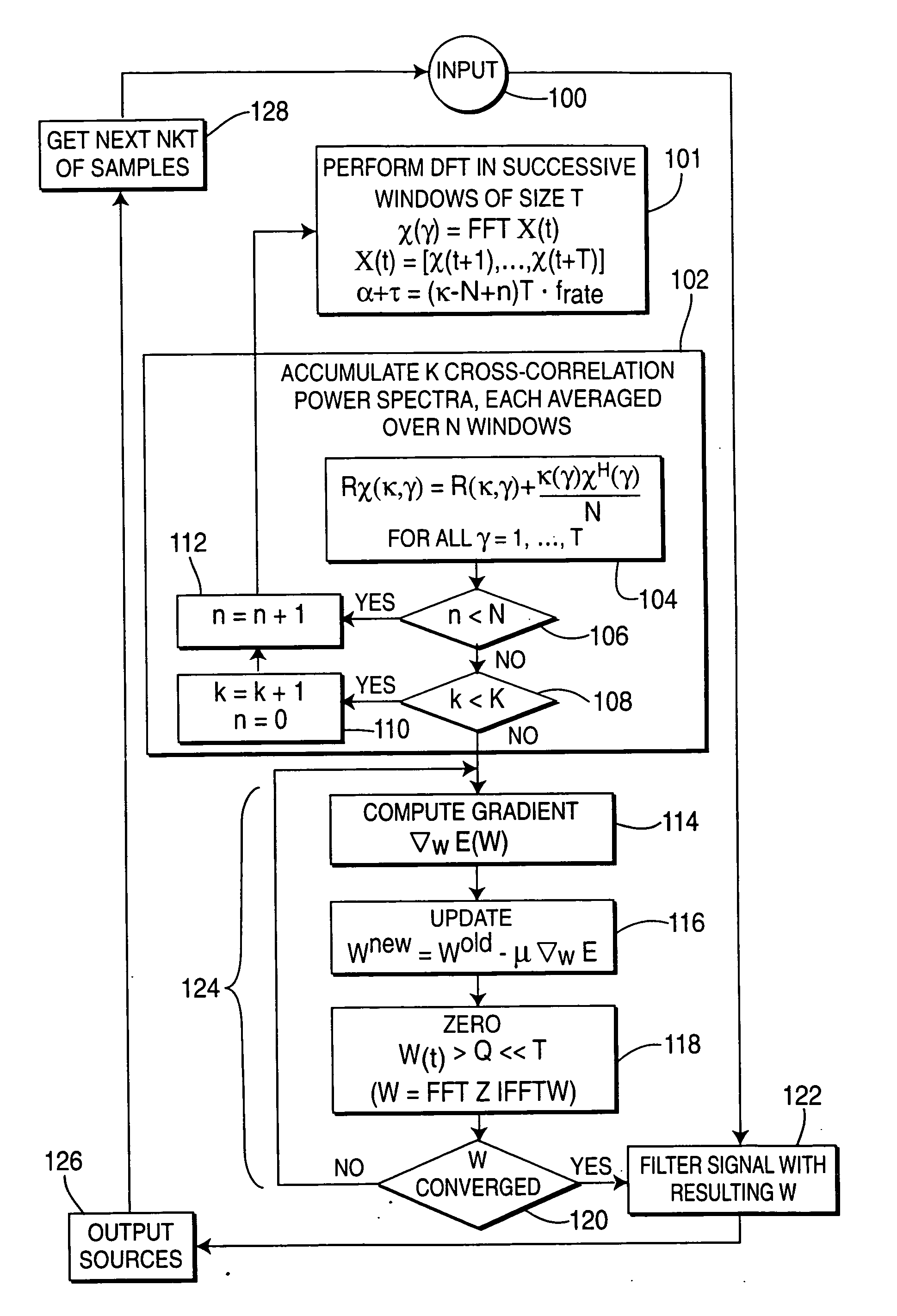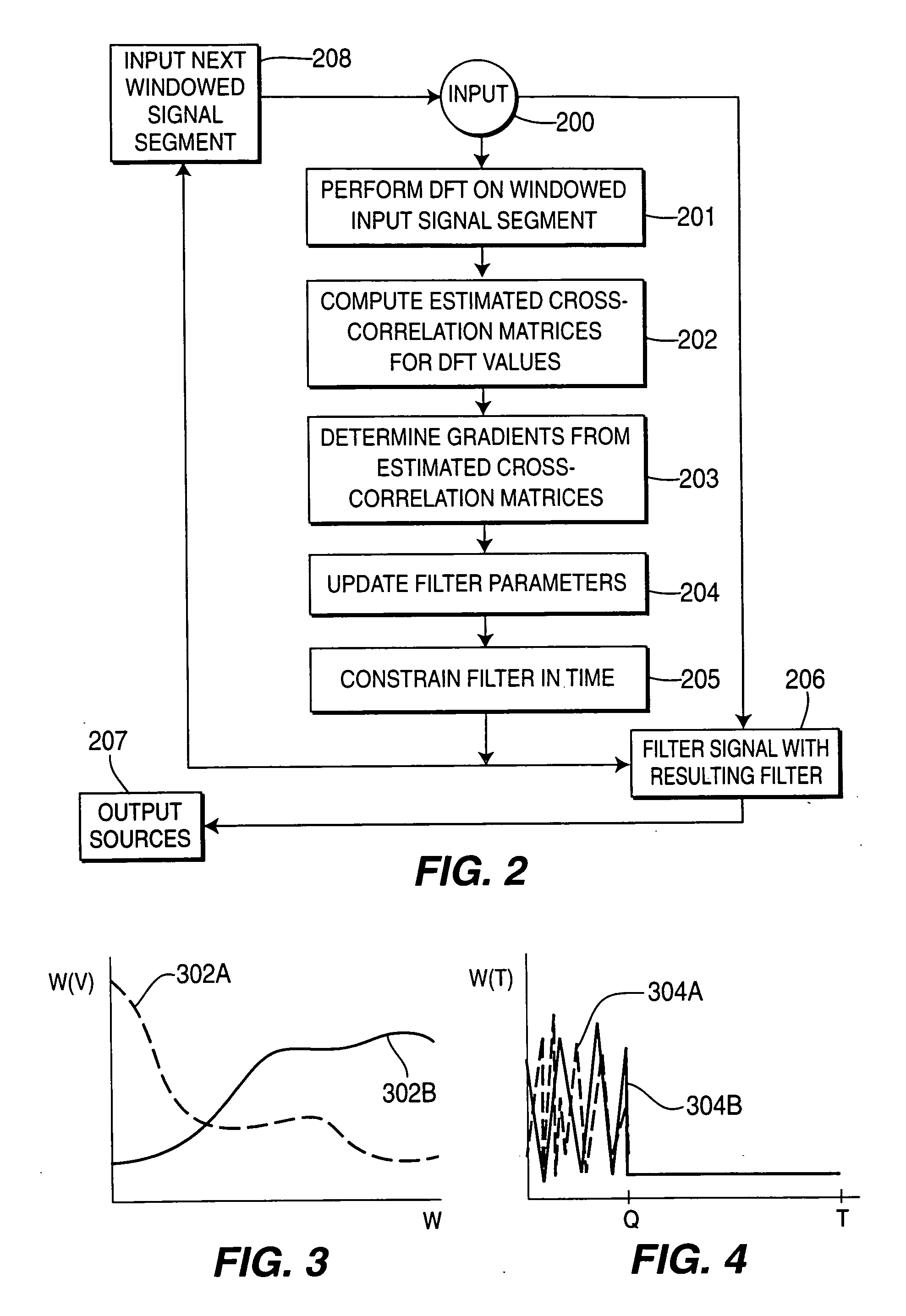Method and system for on-line blind source separation
a blind source and signal separation technology, applied in the field of signal processing, can solve the problems of not being able to converge, not being able to guarantee convergence, and being difficult to implement former methods, and being too long
- Summary
- Abstract
- Description
- Claims
- Application Information
AI Technical Summary
Benefits of technology
Problems solved by technology
Method used
Image
Examples
Embodiment Construction
[0020] An important aspect of the methodology of the invention is the recognition that, with non-stationary signals, the non-stationarity can be exploited to decorrelate the estimated sources in a BSS environment at multiple times—i.e. at such multiple times, one will have different correlations. With the computation of the cross correlations among the multiple non-stationary signals, a different cross correlation measure will be determined at a first time than at a second, later time. In this non-stationary, multiple source environment, a separation algorithm according to the method of the invention, operates on the temporally-separated multiple cross correlations to simultaneously diagonalize them. Two embodiments of the method of the invention are described below. In a first embodiment, all cross correlations are first computed from the entire signal. A gradient descent algorithm then computes the best diagonalizing filters, with which the signals are subsequently filtered. In th...
PUM
 Login to view more
Login to view more Abstract
Description
Claims
Application Information
 Login to view more
Login to view more - R&D Engineer
- R&D Manager
- IP Professional
- Industry Leading Data Capabilities
- Powerful AI technology
- Patent DNA Extraction
Browse by: Latest US Patents, China's latest patents, Technical Efficacy Thesaurus, Application Domain, Technology Topic.
© 2024 PatSnap. All rights reserved.Legal|Privacy policy|Modern Slavery Act Transparency Statement|Sitemap



